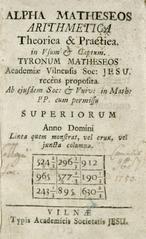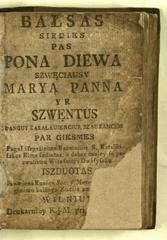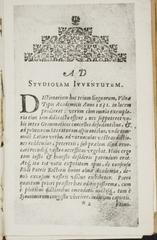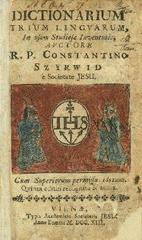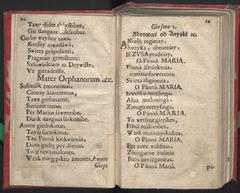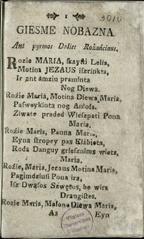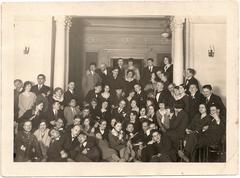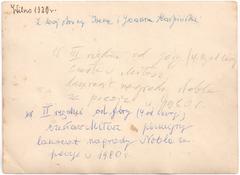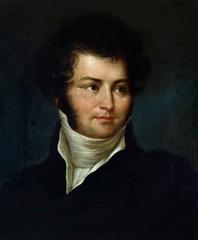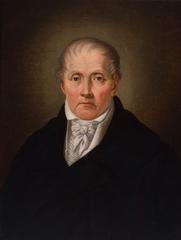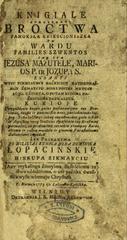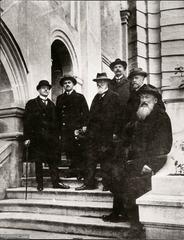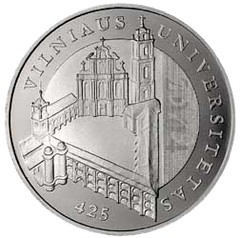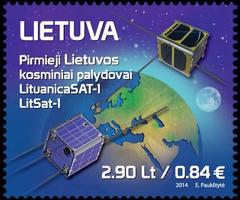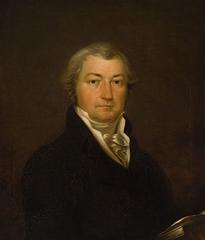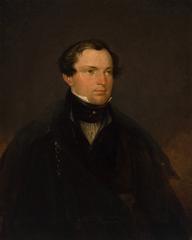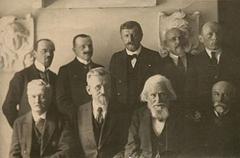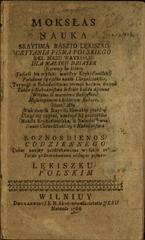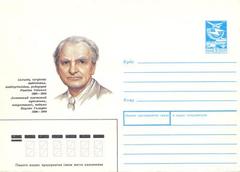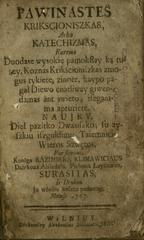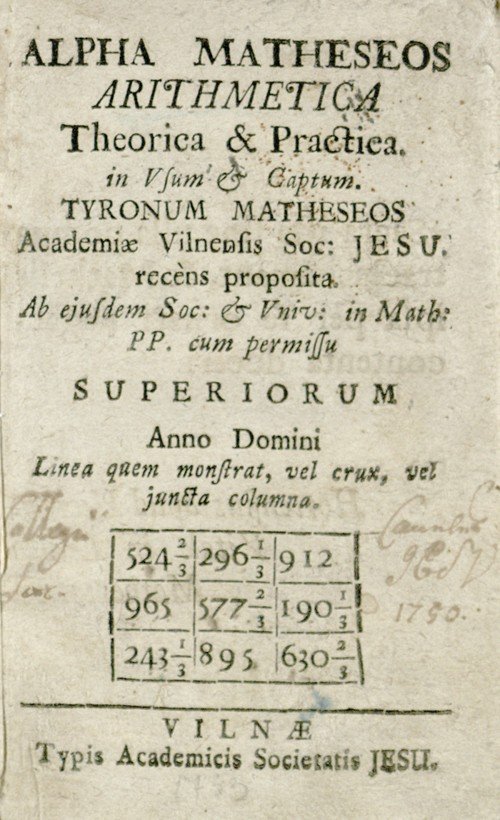
Imperial University of Vilna (Vilnius University): Visiting Hours, Tickets, and Historical Significance
Date: 14/06/2025
Introduction
Vilnius University—historically known as the Imperial University of Vilna—is one of Eastern Europe’s oldest and most prestigious academic institutions. Founded in 1570 and gaining university status in 1579, it stands at the heart of Vilnius Old Town, a UNESCO World Heritage Site. Its courtyards, architectural ensemble, and intellectual legacy make it an indispensable stop for history enthusiasts, architecture lovers, and travelers exploring Lithuania (Edarabia; Vilnius University History).
This guide provides a detailed overview of Vilnius University’s history, cultural and architectural highlights, visiting hours, ticketing, accessibility, guided tours, and practical tips—ensuring you get the most from your experience at this iconic Lithuanian landmark.
Historical Overview
Foundation and Early Jesuit Era (1570–1773)
Established as a Jesuit college in 1570 and granted university status in 1579 by King Stephen Bathory and Pope Gregory XIII, Vilnius University quickly became known for academic excellence, attracting scholars from across Europe. The institution played a significant role in the Counter-Reformation and published the first Lithuanian-language book on its grounds. The founding of the Astronomical Observatory in 1753 was a landmark in regional science (Edarabia).
Secularization and Enlightenment (1773–1803)
After the Jesuit order was dissolved in 1773, the university entered a secular era, expanding its curriculum to include the sciences and law while embracing Enlightenment ideals (Edarabia).
Imperial University of Vilna: The Golden Age (1803–1832)
As the Imperial University of Vilna under Russian rule, the university flourished, becoming one of Eastern Europe’s largest academic centers and a hub of Enlightenment thought. Notable alumni include Adam Mickiewicz and Simonas Daukantas. The university was closed in 1832 by Tsar Nicholas I following anti-Tsarist uprisings (Lituanistika).
19th and 20th Century: Closure, Reopening, and Modernization
The university remained closed for much of the 19th century, reflecting the shifting control and national identities of the region. It reopened as Stefan Batory University under Polish administration in 1919, survived WWII and Soviet occupation, and regained autonomy with Lithuanian independence in 1990 (Lituanistika; Edarabia).
Architectural and Cultural Significance
Historical Layers and Architectural Evolution
The campus features an extraordinary blend of Gothic, Renaissance, Baroque, and Neoclassical architecture—testament to centuries of historical change. Its 13 courtyards and numerous buildings, including St. John’s Church and the Observatory, tell the story of Vilnius through stone and art (Vilnius University History).
Univer-City Concept
Unlike isolated campuses, Vilnius University is seamlessly integrated into the urban fabric of Old Town, embodying the “univer-city” model where academic and civic life merge (UniverCities).
Key Architectural Highlights
- St. John’s Church and Bell Tower: A Baroque masterpiece with a panoramic bell tower (68 meters high), open for visits and offering the best views of Vilnius (Go Vilnius).
- Astronomical Observatory: Established in 1753, with the motto “Hinc Itur Ad Astra” (“From here, the way leads to the stars”).
- University Library: Over 5 million volumes, including rare manuscripts and historic reading rooms.
- Courtyards: Thirteen distinctive courtyards, each commemorating notable scholars (Go Vilnius).
Cultural Influence
Vilnius University has shaped Lithuanian and regional culture for over four centuries, hosting poets, philosophers, historians, and scientists. Its multicultural environment reflects the diversity and tolerance that defines Vilnius (A Short History; Vilnius and its 700-year history).
Preservation and Adaptive Reuse
Ongoing restoration ensures the campus’s historical integrity while integrating modern facilities (UniverCities).
Visiting Vilnius University: Practical Information
Visiting Hours
- Courtyards: Open year-round during daylight hours (typically 9:00–18:00 or 19:00).
- St. John’s Church and Bell Tower: Monday–Saturday 9:00–19:00, Sunday 9:00–15:00; closed on national holidays (Go Vilnius).
- Library: Monday–Friday 9:00–17:00; closed on weekends and public holidays.
Always check the official Vilnius University website for the latest updates.
Tickets and Entry
- Courtyards: Free for individual visitors.
- St. John’s Church and Bell Tower: Small ticket fee (approx. €3); discounts for students and seniors.
- Guided Tours: €2 for adults, €1 for students and pupils. Full tours (including library, church, and bell tower) may cost more, especially for groups or in foreign languages (Go Vilnius).
Guided Tours
Guided tours are available in several languages and cover major highlights. Book online or at the visitor center; group tours should be reserved in advance during peak season (Vilnius University Wikipedia).
Accessibility
Most courtyards and ground-floor areas are accessible; some upper floors and historic sections (e.g., bell tower, certain library halls) may not be suitable for those with mobility challenges. Advance inquiries are advised.
Photography and Etiquette
Photography is allowed in most outdoor and public areas, but restrictions may apply indoors, especially in the library and during services. Flash and tripods are typically not permitted.
Key Attractions and Visitor Experience
- Historic Courtyards: Tranquil, atmospheric, and free to explore (Go Vilnius).
- St. John’s Church and Bell Tower: Baroque architecture and panoramic city views (My Global Viewpoint).
- University Library: Rare manuscripts and ornate reading rooms (Go Vilnius).
- Frescoes and Artworks: Including “The Seasons” by Petras Repšys (Free Tour Community).
- Academic Events: Public lectures, exhibitions, and graduation ceremonies (often held in the Grand Courtyard).
Nearby Attractions
Vilnius University’s central location puts it within walking distance of:
- Pilies Street: Bustling with shops and cafes (Go Vilnius).
- Presidential Palace.
- Gediminas Castle Tower: Iconic views of the city (Nomad Epicureans).
- Bernardine Garden: For relaxation after your tour.
- Republic of Užupis: Vilnius’s bohemian neighborhood (Serendipity Adventures).
Frequently Asked Questions (FAQ)
Q: What are Vilnius University’s visiting hours?
A: Typically 9:00–18:00 or 19:00 for courtyards; church and bell tower may close earlier on Sundays.
Q: Are tickets required?
A: Courtyards are free; church, bell tower, and guided tours have modest fees.
Q: Are tours available in English?
A: Yes, guided tours are offered in English and other languages.
Q: Is the campus accessible for people with mobility challenges?
A: Most ground areas are accessible, but some historic buildings have limited access. Contact the visitor center for assistance.
Q: Can I take photos?
A: Yes, in most areas—be mindful of restrictions in certain indoor spaces.
Practical Tips
- Best time to visit: Spring and early autumn for pleasant weather and fewer crowds.
- Maps and virtual tours: Available on the university website.
- Amenities: Gift shop, café, and restrooms onsite.
Safety and Responsible Tourism
Vilnius is a safe city, but as with any destination, keep valuables secure and be mindful during crowded events. Respect ongoing academic activities and restricted areas to help preserve the university for future generations.
Plan Your Visit and Stay Connected
For current visiting hours, ticket prices, and special events, always consult the official Vilnius University site. Enhance your experience by downloading the Audiala app for audio guides and up-to-date event information.
Follow us on social media for news and travel inspiration:
- Facebook: @AudialaTravel
- Instagram: @AudialaApp
- Twitter: @Audiala
Summary
Vilnius University, formerly the Imperial University of Vilna, stands as a monument to Lithuania’s enduring intellectual and cultural legacy. Its layered history, stunning architecture, and vibrant academic life make it a must-see for visitors to Vilnius. Whether you’re exploring its tranquil courtyards, climbing the bell tower, or joining a guided tour, you’ll experience the living heart of Lithuanian heritage (Edarabia; Lituanistika; Vilnius University History; Go Vilnius; Nomad Epicureans; Serendipity Adventures).
Download the Audiala app and follow our channels to stay informed and inspired as you explore Vilnius’s historical treasures!
References
- Edarabia: Vilnius University Overview
- Vilnius University Official History
- Go Vilnius: Visiting Vilnius University
- Nomad Epicureans: Best Things to Do in Vilnius
- Vilnius University Wikipedia
- Lituanistika: Imperial University of Vilna History
- UniverCities: Campus and City Integration
- Vilnius Events Calendar
- Serendipity Adventures: Top Attractions in Vilnius
